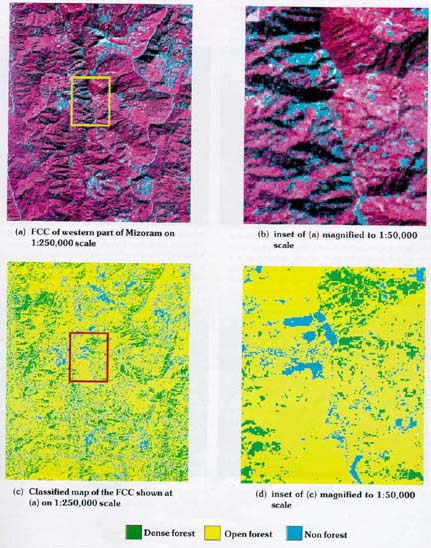Scale of Interpretation
The first assessment in 1987 was done visually on 1:1 million scale. Thereafter, upto 1999 the assessment was done on 1:250,000 scale. On this scale, the country was covered by 363 toposheets of SOI. To enrich the information on forest cover and to make it more useful, assessment on 1:50,000 scale is desirable and has been taken up since the 2001 assessment for the forest cover assessment to be done on 1:50,000 scale, the quantum of work increase manifold as the country is covered by 5,200 sheets on this scale. However, the application of DIP reduces the time taken in interpretation significantly.
DIP technique offers a more objective assessment of forest cover at a larger scale and better cartographic presentation, thus overcoming the limitations of visual interpretation to a large extent. Advantages of the forest cover mapping on larger scale would be evident from Fig. which shows that the details, not discernable on 1:250,000 scale, are highlighted on 1:50,000 scale. In case of fragmented forest, the area of forest cover decreases as the openings which were not clearly discernible on the smaller scale are picked up on the larger scale. Conversely, the scattered small patches of forests/plantations, not discernible at smaller scale, are included in the assessment on larger scale thus adding to forest cover.
 Fig. Illustration of Magnification of Details with the Enhancement of Scale
Fig. Illustration of Magnification of Details with the Enhancement of Scale



